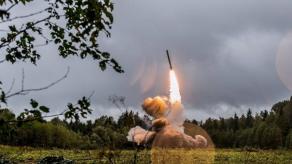After reports emerged that the European Union's plan to produce 1 million 155mm artillery ammunition for Ukraine was only 30% completed by the end of October, Brussels has officially acknowledged the shortfall.
After the previous report unveiling the issue, Bloomberg raised the topic once again. According to the new article, the European External Action Service has informed EU diplomats that the goal of delivering 1 million artillery rounds will not be achieved by the intended deadline of March 2024.
Read more: Analyzing russian Report of 2,100 Tanks Produced in 2023, and Where's the Catch in These Data
It's crucial to note that even the initial goal of 1 million per year means making 83,000 per month or 2,800 per day, and even if achieved, still falls short of Ukraine's actual needs. For context, as of March this year, the Armed Forces of Ukraine were consuming 110,000 155mm shells per month, equivalent to 3,600 shells per day, according to former Minister of Defense Oleksiy Reznikov.
While Europe's contribution is significant, the main source of artillery ammunition for Ukraine is the United States, primarily due to the extensive reserves it possesses. The U.S., despite its low initial production rate of 14,000 155mm shells per month in 2021, managed to increase output to 28,000 by September, surpassing initial plans.
Meanwhile, the EU transferred approximately 300,000 artillery rounds from late March to September this year, i.e. the average is 42,800 shells produced (and delivered) a month.
The United States is currently aiming for 60,000/month in 2024, 80,000 in 2025, and a stable rate of 100,000 per month by 2026. All industrial capacities combined, American manufacturers would be able to consistently make 1+ mln only in 2026.

Simply put, the entire U.S. defense industry has set the goal of reaching 1 million/month in a much longer time frame than the EU. Just a few days ago Congress injected an additional USD 3.1 billion to boost ammo production.
At the same time, the EU, as required by the Act in Support of Ammunition Production, allocated only €0.5 billion for expanding production, and another €1 billion for procurement of ammunition from manufacturers for Ukraine. Of course, any other potential financial infusions from the individual EU members should not be ruled out.
The combined production capacity of the U.S. and the EU currently stands at approximately 70,000 munitions per month or 840,000 per year. And here's the interesting issue.
There are two possible conclusions: either the Western industry is so non-competitive, or the russian declared capacity for artillery ammunition production of 1.2 to 1.5 mln shells a year is exaggerated. Especially since the russians tend to include all types of munitions under the general figure, that is, all shells from caliber 20mm and larger.
Alternatively, a more threatening possibility is that there might be some more powerful industrial powers behind the "russian" ammunition manufacture.
Read more: How Much Money U.S. Army Needs to Scale Up Acquisition and Production of 155mm Ammunition, Pentagon Official Reveals














